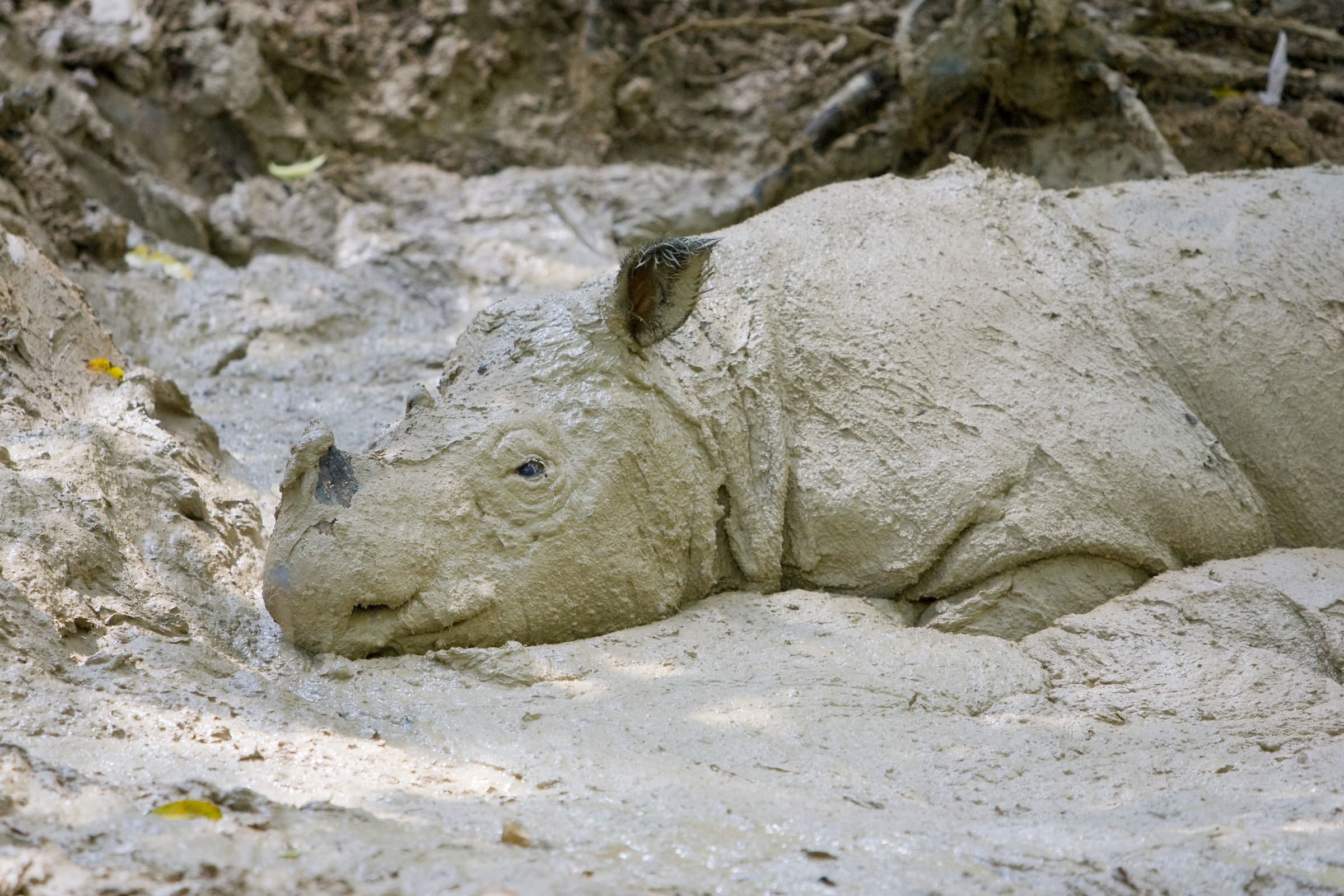Catching sight of a mighty rhino, with its thick, armor-like skin and prominent horns atop its nose, makes you feel like you are looking at a primeval animal. And that’s because these horned giants are indeed ancient mammals that evolved over 50 million years ago, shortly after the extinction of dinosaurs.
For a time, rhinos were the largest land mammals on the planet. Today, the African white rhino remains the second largest after elephants, capable of weighing over 5,500 pounds. That’s massive, given their body size of 11 feet in length and 6 feet in height.
Rhino skin is astonishingly dense, with some species’ skin measuring as much as 2 inches thick. Their skin is composed of uniquely lattice-layered collagen to add further protection against attacks. Still, rhinos are susceptible to sunburn and insects, and they protect their skin by wallowing in the mud.
Undoubtedly, the most distinctive rhino feature are their horns. The black, white, and Sumatran rhinos have two horns, while the Javan and the greater one-horned rhinos have a single horn. Rhino horns are made of compressed keratin fibers and can regrow when damaged. Their horns serve to defend territory, protect calves from threats, and forage for food and water.



